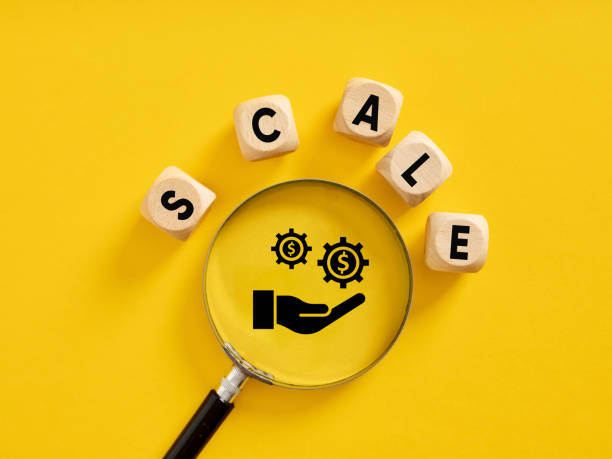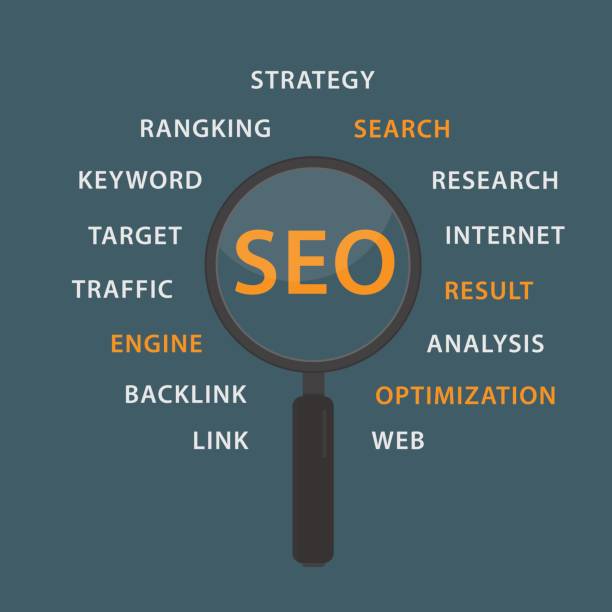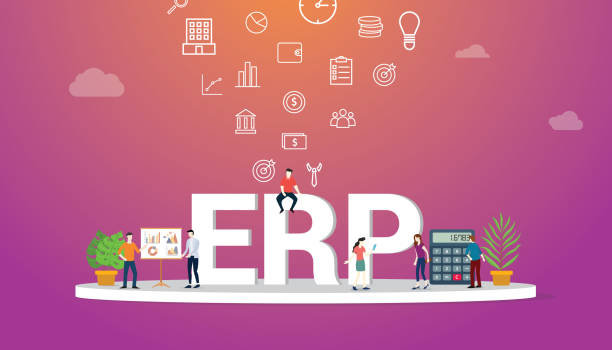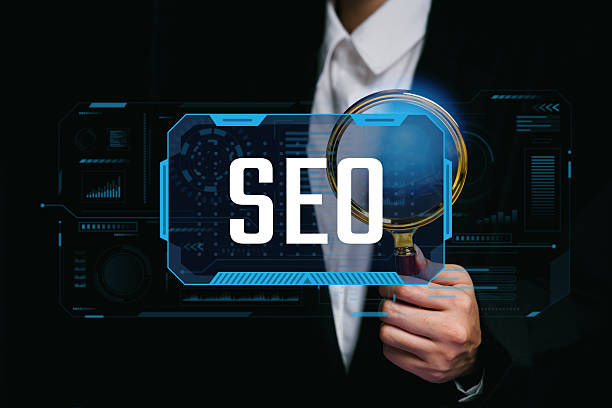What is On-Page SEO and Why is it Important?

On-Page SEO refers to a set of actions you take within your website to improve your site’s ranking in search engines like Google.
These actions include content optimization, using appropriate keywords, improving site structure, increasing loading speed, and creating a better user experience.
The importance of On-Page SEO stems from the fact that it helps search engines better understand your site’s content and display it to the target audience.
If your site is well optimized for On-Page SEO, it is more likely to rank higher in search results and attract more organic traffic.
Ignoring On-Page SEO can cause your site to be unseen among competitors and miss many opportunities.
In fact, On-Page SEO is one of the main pillars of any successful SEO strategy.
To have a successful website, you need to pay attention to different aspects of On-Page SEO.
These aspects include optimizing title tags, meta descriptions, using keywords in content, creating high-quality internal and external links, optimizing images, and improving site loading speed.
By taking these actions, you can show search engines that your site is a valuable and relevant resource for users.
In this way, you can improve your site’s ranking in search results and attract more organic traffic.
Optimizing On-Page SEO is a continuous process and needs to be reviewed and updated to keep pace with changes in search engine algorithms.
Dreaming of a thriving online store but don’t know where to start?
Rasaweb is your comprehensive e-commerce website design solution.
✅ Attractive and user-friendly design
✅ Increased sales and revenue⚡ Get free consultation
Keyword Research; The Foundation of On-Page SEO

Keyword research is the process of identifying the words that users use to search in search engines.
These words should be relevant to your site’s content and, on the other hand, have a decent search volume.
Choosing the right keywords is the first step to successful On-Page SEO.
Without a comprehensive list of keywords, you cannot produce content that meets the needs of the audience and ranks high in search results.
To start keyword research, you can use various tools such as Ahrefs, Moz Keyword Explorer, Ubersuggest and Google Search Console.
These tools help you find keywords related to your field and check their search volume and competition.
After identifying keywords, you should use them in your site’s content.
But you should keep in mind that overuse of keywords (keyword stuffing) can damage your site’s ranking.
Therefore, you should use keywords naturally and in the appropriate context.
Also, you should pay attention to long-tail keywords as well.
These words usually have lower search volume, but also have less competition and can attract more targeted traffic to your site.
Keyword research is an ongoing process and you should regularly identify new keywords and add them to your site’s content.
Optimizing Title Tags and Meta Descriptions

Title tags and meta descriptions are two important elements in On-Page SEO that are displayed in search results.
The title tag is the title of your page that appears at the top of search results.
The meta description is a short summary of your page’s content that is displayed below the title.
Optimizing these two elements can help increase your site’s click-through rate (CTR).
The click-through rate is the percentage of users who click on your site’s link after seeing the search results.
The higher your click-through rate, the more likely your site is to rank higher in search results.
To optimize title tags, you should use keywords related to your page’s content and write the title attractively and persuasively.
The length of the title tag should be between 50 and 60 characters to be fully displayed in search results.
To optimize meta descriptions, you should write an accurate and attractive summary of your page’s content and use relevant keywords.
The length of the meta description should be between 150 and 160 characters.
Title tags and meta descriptions play an important role in attracting audiences and improving your site’s ranking in search results.
By optimizing these two elements, you can show search engines that your site is relevant and valuable and help users quickly find the information they need.
Also, you should keep in mind that title tags and meta descriptions should be unique for each page of your site.
Using duplicate title tags and meta descriptions can damage your site’s ranking.
For example, in an online store, each product should have its own unique title tag and meta description.
On-Page SEO helps to optimize titles and metas so that more users are attracted to your website.
| Feature | Recommendation |
|---|---|
| Title Tag Length | Between 50 to 60 characters |
| Meta Description Length | Between 150 to 160 characters |
| Keywords | Use relevant keywords |
| Uniqueness | Tags should be unique for each page |
Creating High-Quality and SEO-Optimized Content

Content is king! This famous phrase in the world of On-Page SEO is still true.
Creating high-quality and SEO-optimized content is one of the most important factors for success in On-Page SEO.
High-quality content is content that meets the needs of the audience, provides accurate and useful information, and is enjoyable to read.
SEO-optimized content is content that is optimized for search engines and ranks high in search results by using appropriate keywords.
To create high-quality and SEO-optimized content, you need to pay attention to a few points.
First, you need to know your audience and produce content that is attractive and useful to them.
Second, you should use appropriate keywords in your content, but avoid overuse of keywords.
Third, you should update your content regularly and add new information to it.
Fourth, you should promote your content regularly and share it on social networks and other marketing channels.
By producing high-quality and SEO-optimized content, you can attract more organic traffic to your site and improve your site’s ranking in search results.On-Page SEO and content production are two sides of the same coin
Creating high-quality and SEO-optimized content is an ongoing process and requires review and updates.
You should regularly review the performance of your content and improve it based on user feedback and changes in search engine algorithms.
Also, you should pay attention to the content of your competitors and try to produce content that is better and more comprehensive than their content.
With effort and perseverance, you can produce content that not only meets the needs of the audience but also improves your site’s ranking in search results and attracts more organic traffic to your site.
Did you know that 85% of customers review your company’s website before any interaction?
With Rasaweb, build a company website that deserves your reputation.
✅ Increase customer trust and credibility
✅ Attract high-quality leads
⚡ Get free website design consultation
Optimizing Images for On-Page SEO

Images play an important role in the attractiveness and efficiency of your website.
But large and unoptimized images can slow down your site’s loading speed and affect the user experience.
Optimizing images for On-Page SEO involves several steps.
First, you should use the appropriate format for your images.
JPEG and PNG formats are two common formats for images.
The JPEG format is suitable for images with many colors, while the PNG format is suitable for images with few colors and transparency.
Second, you should reduce the size of your images.
Large images can slow down your site’s loading speed and affect the user experience.
To reduce the size of images, you can use various tools such as TinyPNG and ImageOptim.
Third, you should use alt text for your images.
Alt text is text that is displayed instead of the image if it does not load.
Alt text also helps search engines understand the content of the image.
To write alt text, you should use keywords related to the content of the image and write the text concisely and descriptively.
By optimizing your images for On-Page SEO, you can improve your site’s loading speed, enhance the user experience, and help search engines better understand your site’s content.
Also, you should pay attention to the file names of your images.
Image file names should be descriptive and related to the content of the image.
Avoid using duplicate and incomprehensible file names.
For example, instead of using the file name “IMG_1234.jpg”, use the file name “laptop-computer.jpg”.
Descriptive file names help search engines better understand the content of the image and improve your site’s ranking in search results.
Optimized images are a key factor in On-Page SEO.
Improving Site Loading Speed

Site loading speed is one of the important factors in On-Page SEO that has a significant impact on user experience and site ranking in search results.
Users expect web pages to load quickly.
If your site’s pages load slowly, users may leave your site and visit other sites.
This can lead to a decrease in conversion rate and a decrease in your site’s ranking in search results.
To improve site loading speed, you need to pay attention to a few points.
First, you should use a quality hosting service.
Quality hosting has higher speed and stability and can help improve your site’s loading speed.
Second, you should use a lightweight and optimized template.
Heavy and complex templates can slow down your site’s loading speed.
Third, you should optimize your images and reduce their size.
Fourth, you should use cache plugins.
Cache plugins can store your site’s files in the cache and increase the site’s loading speed.On-Page SEO provides a better experience for users by improving site speed.
By improving your site’s loading speed, you can enhance the user experience, improve the conversion rate, and improve your site’s ranking in search results.
Also, you should pay attention to optimizing your site’s HTML and CSS code.
Messy and unnecessary code can slow down your site’s loading speed.
To optimize the code, you can use various tools such as Google PageSpeed Insights and GTmetrix.
These tools help you identify and fix problems related to your site’s loading speed.
High and optimal speed in On-Page SEO is of particular importance.
Internal and External Linking

Internal and external linking are two important strategies in On-Page SEO that help improve your site’s ranking in search results.
Internal linking refers to creating links between different pages of your site.
Internal links help search engines better understand your site’s structure and identify the important pages of your site.
Also, internal links help users easily navigate your site and find the information they need.
To create internal links, you need to pay attention to a few points.
First, you should use the appropriate anchor text.
The anchor text should be related to the content of the page you are linking to.
Second, you should place the links naturally in your content and avoid overuse of links.
Third, you should create links to the important pages of your site.
External linking refers to creating links from other sites to your site.
External links show search engines that your site is a credible and valuable resource and help your site’s ranking in search results.
To create external links, you need to pay attention to a few points.
First, you should get links from reputable sites that are related to your field.
Second, you should use the appropriate anchor text.
Third, you should get links naturally and avoid buying links.
Buying links can damage your site’s ranking.
By creating high-quality internal and external links, you can improve your site’s ranking in search results and attract more organic traffic to your site.
Principled linking plays a vital role in On-Page SEO.
| Link Type | Description | Benefits |
|---|---|---|
| Internal | Links between pages of your own site | Improve site structure, help users |
| External | Links from other sites to your site | Increase site credibility, improve ranking |
Mobile Optimization

Given the increasing use of mobile devices to search the internet, optimizing your site for mobile is of particular importance.
Google prioritizes sites that are optimized for mobile and shows them higher in search results.
To optimize your site for mobile, you need to pay attention to a few points.
First, you should use a responsive template.
A responsive template automatically adjusts the size and layout of your site to fit the screen size of the user’s device.
Second, you should improve your site’s loading speed on mobile devices.
Third, you should adjust the font sizes and buttons so that users can easily use your site on mobile devices.
Mobile-friendly On-Page SEO is an important factor in online success.
By optimizing your site for mobile, you can enhance the user experience, improve the conversion rate, and improve your site’s ranking in search results.
Also, you should pay attention to using AMP (Accelerated Mobile Pages) as well.
AMP is an open-source framework that helps you load your website pages quickly for mobile devices.
By using AMP, you can significantly increase your site’s loading speed and improve the user experience.
Does your current website create the trust that potential customers should have in your business? If the answer is no, it’s time to have a professional and impactful company website with Rasaweb.
✅ Completely custom design tailored to your brand identity
✅ Increase lead capture and credibility of your business in the eyes of customers⚡ Contact us for a free consultation!
Using Structured Data (Schema Markup)

Structured data (Schema Markup) are codes that help search engines better understand your site’s content and display it more accurately in search results.
By using structured data, you can provide important information such as product name, price, rating, address and phone number to search engines.
Search engines use this information to create rich snippets.
Rich snippets are results that display additional information in addition to the title and meta description, such as images, ratings and prices.
Rich snippets can help increase your site’s click-through rate.
To use structured data, you need to add the appropriate codes to your site’s pages.
You can use various tools such as Schema Markup Generator to generate structured data codes.
By using structured data, you can help search engines better understand your site’s content and display it more accurately in search results.
This can help increase your site’s click-through rate and improve your site’s ranking in search results.
Also, you should pay attention to using the HTTPS protocol as well.
HTTPS is a secure protocol that encrypts information between your site and users.
Google prioritizes sites that use HTTPS and shows them higher in search results.
If your site does not use HTTPS, you should activate it as soon as possible.
This helps increase your site’s security and improve your site’s ranking in search results.On-Page SEO improves website ranking by using structured data.
Analysis and Continuous Improvement

On-Page SEO is an ongoing process and requires analysis and continuous improvement.
You should regularly review your site’s performance and identify its strengths and weaknesses.
To do this, you can use various tools such as Google Analytics and Google Search Console.
Google Analytics helps you review your site’s traffic and analyze user behavior on your site.
Google Search Console helps you identify and fix problems related to your site’s On-Page SEO.
By analyzing Google Analytics and Google Search Console data, you can identify your site’s strengths and weaknesses and improve your On-Page SEO strategy based on this information.
For example, reviewing the bounce rate of different pages of the site can show you which pages need content improvement.
Also, reviewing the keywords that users use to enter your site can help you identify new keywords to target.
Using this information, you can improve your site’s content, optimize your site’s structure, and strengthen your internal and external linking.
With analysis and continuous improvement, you can improve your site’s ranking in search results and attract more organic traffic to your site.
In On-Page SEO, data analysis and continuous improvement are essential.
Frequently Asked Questions
| Question | Answer |
|---|---|
| What is On-Page SEO? | On-page SEO involves optimizing elements that are directly in your control and within your website. Its goal is to help search engines better understand the content of the page and improve its ranking. |
| Why is On-Page SEO important? | On-page SEO gives clear signals to search engines about the content of the page, improves the user experience, and increases the chance of attracting organic traffic. |
| What are the most important On-Page SEO factors? | Keywords, Title Tag, Meta Description, URL structure, quality content, image optimization and internal links are among the most important factors. |
| What is the role of the Title Tag in On-Page SEO? | The title tag is one of the most important signals for search engines and users that specifies the main topic of the page. It should include the main keyword and be attractive. |
| How important is the Meta Description? | The meta description does not directly affect the ranking, but it can improve the click-through rate (CTR) by encouraging users to click. |
| How to optimize images for On-Page SEO? | By using a descriptive file name, appropriate Alt Text containing keywords, compression to reduce volume, and correct dimensions. |
| What is the impact of Internal Links on SEO? | Internal links help search engines discover and index site pages, distribute credit (PageRank) throughout the site, and improve user navigation. |
| Is page loading speed one of the On-Page SEO factors? | Yes, page loading speed is a critical factor in On-Page SEO and user experience. Slower pages can lead to higher bounce rates and lower rankings. |
| What are the characteristics of quality content for On-Page SEO? | Quality content should be comprehensive, unique, relevant, reliable, readable, and fully answer the needs and questions of users. |
| How to use keywords in content? | Keywords should be used naturally in the title, subheadings, first paragraph, body text and alt text of images. Avoid keyword stuffing. |
And other services of Rasa Web advertising agency in the field of advertising
Smart digital advertising: a new service to increase website visits through precise audience targeting.
Smart brand identity: Designed for businesses looking for digital branding through the use of real data.
Smart digital advertising: a new service to increase customer behavior analysis by optimizing key pages.
Smart marketplace: A creative platform to improve customer acquisition with smart data analysis.
Smart digital branding: a fast and efficient solution to increase sales by focusing on optimizing key pages.
And more than hundreds of other services in the field of internet advertising, advertising consulting and organizational solutions
Internet Advertising | Advertising Strategy | Advertorial
Resources
On-Page Optimization at Moz
,On-Page SEO Guide at Search Engine Journal
,On-Page SEO: A Complete Guide
,What is On-Page SEO: A Complete Guide
? Are you ready to transform your business in the digital world? Rasaweb Afrin, a leading digital marketing agency, with expertise in digital marketing and WordPress website design, offers comprehensive solutions for your growth, visibility and sustainable success. With us, experience a powerful presence in the online space.
📍 Tehran, Mirdamad Street, next to Central Bank, South Kazerun Alley, Ramin Alley No. 6



